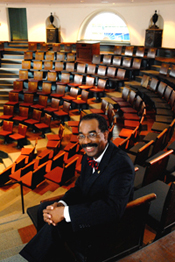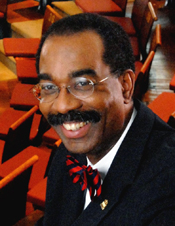 What’s on my mind this month is the School of Medicine’s Class of 2012 and their extraordinary achievements, which we celebrated last month in a wonderful convocation ceremony at the Baltimore Hilton. One-hundred fifty-two students took the solemn Oath of Hippocrates, signifying their commitment to the ancient tradition of healing, and pledging to serve humanity. This oath has stood the test of time, and represents the gold standard of moral and ethical behavior to which all physicians are bound.
What’s on my mind this month is the School of Medicine’s Class of 2012 and their extraordinary achievements, which we celebrated last month in a wonderful convocation ceremony at the Baltimore Hilton. One-hundred fifty-two students took the solemn Oath of Hippocrates, signifying their commitment to the ancient tradition of healing, and pledging to serve humanity. This oath has stood the test of time, and represents the gold standard of moral and ethical behavior to which all physicians are bound.
Our graduating medical students join the ranks of some 17,000 alumni, who have profoundly transformed medicine and science and who have brought honor to the profession and to this institution. Convocation is a time of celebration and reflection. As I look back over these last few years, I am struck the ability of our medical and graduate students to balance an intense desire to achieve personal and professional goals and a strong determination to make a difference in the lives of others. Our medical, graduate and allied health students have been taught and mentored by exceptional faculty members. They have been exposed to rigorous curricula, preparing them to become outstanding physicians, scientists, physical therapists and medical technologists.
This year’s medical school keynote speaker was Dr. Darrell Kirch, president and chief executive officer of the Association of American Medical Colleges (AAMC). A distinguished physician, educator, and medical scientist, Dr. Kirch is an expert on the nation’s health care system, and how academic medicine can transform that system for the better. Pointing out that 50 million American’s don’t have health insurance, Dr. Kirch urged the graduates to help address disparities and injustice in the nation’s healthcare system. He also voiced support for the “medical home” concept of care in which high functioning teams across the health professions are focused on the patient, not on the convenience of the clinic or hospital. I am proud to say that the University of Maryland is pioneering the medical home model of care through a strong collaboration with Johns Hopkins University and the state health department.
Since 1807, the University of Maryland School of Medicine has produced some of the most outstanding physicians, scientists and educators of our time. In fact, 22 School of Medicine graduates have served as deans of medical schools. Among the many respected graduates, there are several prominent examples:
- In 1948, Dr. Theodore Woodward, Class of ’38, was part of a team that discovered the initial therapeutic cure for scrub typhus fever and was a Nobel Prize nominee.
- In 1968, Dr. R Adams Cowley, Class of ’44, directed the opening of the world’s first Shock Trauma Center, which serves as the world’s leading trauma center.
- In 1985, Dr. Morton Mower, Class of ’59, was co-inventor of the implantable automatic defibrillator, a life saving device used today by many.
- In 2006, Dr. Melvin Sharoky, Class of ’76, and a member of our Board of Visitors, received FDA approval for the first transdermal patch for the treatment of major depressive disorder.
As we appreciate the accomplishments of the past, we must look to future. The health care landscape is changing rapidly and in ways that could not have been imagined even a decade ago. Our graduates will have the opportunity to participate in the transformation of health care, to shape its delivery, and to harness its potential to relieve suffering and illness. It is a daunting challenge, but the members of the Class of 2012 have shown that they have the dedication and determination to truly make a difference. I offer my heartfelt congratulations to the Class of 2012, and to our entire academic community, which made their achievements possible.
In the relentless pursuit of excellence, I am Sincerely yours,
E. Albert Reece, MD, PhD, MBA
Vice President for Medical Affairs, University of Maryland
John Z. and Akiko K. Bowers Distinguished Professor and Dean,
University of Maryland School of Medicine
Appointments
Daniel Griffith, CPA, CMPE, assistant director of finance, Department of Emergency Medicine, has been designated as a certified medical practice executive by the Medical Group Management Association and its standard-setting division, the American College of Medical Practice Executives. This designation acknowledges achievement and competence in business operations, financial management, patient care systems, and risk management.
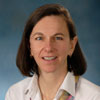 Linda Lewin, MD, associate professor, Department of Pediatrics, has been named associate chair for Educational Programs in the Department of Pediatrics. In this new departmental position, Dr. Lewin’s responsibilities will include visionary and operational oversight and leadership in all areas of student, resident, fellow and faculty education; developing departmental policies and practices related to educational missions; and overseeing and coordinating all CME activities within the department. Terrence Mulligan, DO, MPH, assistant professor, Department of Emergency Medicine, has been appointed vice chair of the International Medicine Committee of the American Academy of Emergency Medicine (AAEM). In this position, Dr. Mulligan will coordinate international emergency medicine activities within AAEM and between AAEM and other organizations.
Linda Lewin, MD, associate professor, Department of Pediatrics, has been named associate chair for Educational Programs in the Department of Pediatrics. In this new departmental position, Dr. Lewin’s responsibilities will include visionary and operational oversight and leadership in all areas of student, resident, fellow and faculty education; developing departmental policies and practices related to educational missions; and overseeing and coordinating all CME activities within the department. Terrence Mulligan, DO, MPH, assistant professor, Department of Emergency Medicine, has been appointed vice chair of the International Medicine Committee of the American Academy of Emergency Medicine (AAEM). In this position, Dr. Mulligan will coordinate international emergency medicine activities within AAEM and between AAEM and other organizations.
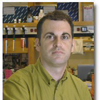 Steven Munger, PhD, professor, Department of Anatomy & Neurobiology, was elected program chair for the 36th Association of Chemoreception Sciences annual meeting, which will be held in April 2014.
Steven Munger, PhD, professor, Department of Anatomy & Neurobiology, was elected program chair for the 36th Association of Chemoreception Sciences annual meeting, which will be held in April 2014.
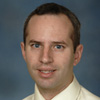 Brian Polster, PhD, assistant professor, Department of Anesthesiology, was appointed in April 2012 to the editorial board of the journal Neurochemistry International for a two-year term.
Brian Polster, PhD, assistant professor, Department of Anesthesiology, was appointed in April 2012 to the editorial board of the journal Neurochemistry International for a two-year term.
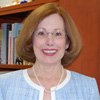 Patricia Shearer, MD, MS, FAAP, professor, Department of Pediatrics, and division chief, Pediatric Hematology/Oncology, was appointed by the American Academy of Pediatrics Hematology/Oncology Executive Committee to the Best Pharmaceuticals for Children Act Working Group, sponsored by the Eunice Kennedy Shriver National Institute of Child Health and Human Development. This working group and others will provide recommendations to the U.S. Food and Drug Administration (FDA) and NICHD on current therapeutic needs in pediatric patients.
Patricia Shearer, MD, MS, FAAP, professor, Department of Pediatrics, and division chief, Pediatric Hematology/Oncology, was appointed by the American Academy of Pediatrics Hematology/Oncology Executive Committee to the Best Pharmaceuticals for Children Act Working Group, sponsored by the Eunice Kennedy Shriver National Institute of Child Health and Human Development. This working group and others will provide recommendations to the U.S. Food and Drug Administration (FDA) and NICHD on current therapeutic needs in pediatric patients.
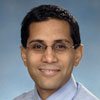 Kevin Sheth, MD, assistant professor, Department of Neurology, was named to the board of directors of the Brain Injury Association of Maryland.
Kevin Sheth, MD, assistant professor, Department of Neurology, was named to the board of directors of the Brain Injury Association of Maryland.
Events, Lectures & Workshops
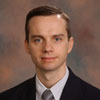 Rolf Barth, MD, associate professor, Department of Surgery, gave the keynote lecture at the British Transplantation Society during an April 2012 conference titled “Transplantation Through the Keyhole.” Dr. Barth presented his data on outcomes and patient satisfaction with single-incision laparoscopic donor nephrectomy, the results of which have been accepted for publication by The Annals of Surgery.
Rolf Barth, MD, associate professor, Department of Surgery, gave the keynote lecture at the British Transplantation Society during an April 2012 conference titled “Transplantation Through the Keyhole.” Dr. Barth presented his data on outcomes and patient satisfaction with single-incision laparoscopic donor nephrectomy, the results of which have been accepted for publication by The Annals of Surgery.
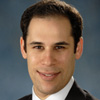 James Borin, MD, assistant professor, Department of Surgery, attended the Fundamentals of Robotic Surgery (FRS) Conference at the Florida Hospital Nicholson Center in Celebration, FL, April 28-30. The FRS is a joint industry funded project —between Intuitive Surgical, Inc. and the Department of Defense (DoD)— designed to develop a basic curriculum for surgical skills for robotic surgery. It was created by multiple surgical specialties that use robotic systems for surgery. The curriculum will be open-source and adaptable for many methods of simulation, from physical models to full virtual reality.
James Borin, MD, assistant professor, Department of Surgery, attended the Fundamentals of Robotic Surgery (FRS) Conference at the Florida Hospital Nicholson Center in Celebration, FL, April 28-30. The FRS is a joint industry funded project —between Intuitive Surgical, Inc. and the Department of Defense (DoD)— designed to develop a basic curriculum for surgical skills for robotic surgery. It was created by multiple surgical specialties that use robotic systems for surgery. The curriculum will be open-source and adaptable for many methods of simulation, from physical models to full virtual reality.
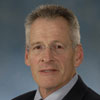 Alan Faden, MD, the David S. Brown Professor in Trauma; professor, Departments of Anesthesiology, Anatomy & Neurobiology, and Neurology; and director, Center for Shock, Trauma & Anesthesiology Research (STAR ORC), presented the 2012 Husman Lecture at the University of Maryland College Park on April 27. His topic was “Brain Trauma and Sport Related Head Injury.” This annual lecture is sponsored by the Department of Kinesiology and the School of Public Health.
Alan Faden, MD, the David S. Brown Professor in Trauma; professor, Departments of Anesthesiology, Anatomy & Neurobiology, and Neurology; and director, Center for Shock, Trauma & Anesthesiology Research (STAR ORC), presented the 2012 Husman Lecture at the University of Maryland College Park on April 27. His topic was “Brain Trauma and Sport Related Head Injury.” This annual lecture is sponsored by the Department of Kinesiology and the School of Public Health.
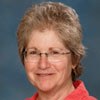 Carol Greene, MD, professor, Department of Pediatrics, presented a talk entitled “Minimizing the Impact of False-Positive Newborn Screen Results” at the annual American College of Medical Genetics meeting in Charlotte, NC, on March 30. For the same meeting, Dr. Greene also developed and moderated a session on “Cardinal Signs and Symptoms of Common and Rare Important Inborn Errors of Metabolism.” In addition, Dr. Greene delivered the Presidential Address, entitled “Pathways,” at the Society for Inherited Metabolic Disorders (SIMD) meeting in Charlotte, NC, on April 2. Dr. Greene serves as the current president of SIMD.
Carol Greene, MD, professor, Department of Pediatrics, presented a talk entitled “Minimizing the Impact of False-Positive Newborn Screen Results” at the annual American College of Medical Genetics meeting in Charlotte, NC, on March 30. For the same meeting, Dr. Greene also developed and moderated a session on “Cardinal Signs and Symptoms of Common and Rare Important Inborn Errors of Metabolism.” In addition, Dr. Greene delivered the Presidential Address, entitled “Pathways,” at the Society for Inherited Metabolic Disorders (SIMD) meeting in Charlotte, NC, on April 2. Dr. Greene serves as the current president of SIMD.
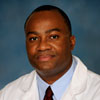 D. Kojo Hamilton, MD, assistant professor, Department of Neurosurgery, was an invited faculty member at the 28th Annual Meeting of the American Association of Neurological Surgeons/Congress of Neurological Surgeons Section on Disorders of the Spine and Peripheral Nerves, which was held in Orlando in March. Dr. Hamilton was a moderator and faculty for several events, including “What’s New in Spine Surgery,” as well as an oral platform presentation and case presentations. At the same meeting, he was an invited guest speaker, presenting on “Complication Avoidance: Ectopic Ossification after rhBMP Use in Spine Surgery.”
D. Kojo Hamilton, MD, assistant professor, Department of Neurosurgery, was an invited faculty member at the 28th Annual Meeting of the American Association of Neurological Surgeons/Congress of Neurological Surgeons Section on Disorders of the Spine and Peripheral Nerves, which was held in Orlando in March. Dr. Hamilton was a moderator and faculty for several events, including “What’s New in Spine Surgery,” as well as an oral platform presentation and case presentations. At the same meeting, he was an invited guest speaker, presenting on “Complication Avoidance: Ectopic Ossification after rhBMP Use in Spine Surgery.”
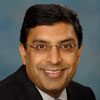 Sunjay Kaushal, MD, PhD, associate professor, Department of Surgery, presented at the International Society for Heart and Lung Transplantation in Prague on April 19. His presentation was entitled “End-Stage Human Failing Hearts Increase Cardiac Progenitor Cells by Switching to a Developmental Program.”
Sunjay Kaushal, MD, PhD, associate professor, Department of Surgery, presented at the International Society for Heart and Lung Transplantation in Prague on April 19. His presentation was entitled “End-Stage Human Failing Hearts Increase Cardiac Progenitor Cells by Switching to a Developmental Program.”
 Achsah Keegan, PhD, professor, Department of Microbiology & Immunology and Center for Vascular and Inflammatory Diseases, and Svetlana Chapoval, PhD, assistant professor, Departments of Biochemistry & Molecular Biology and Microbiology & Immunology, as well as the Center for Vascular and Inflammatory Diseases, served as moderators of the course “Deeper Insights into the Mechanisms of Asthma and Allergic Inflammation” at the annual American Academy of Allergy, Asthma and Immunology meeting in Orlando in March 2012, where Dr. Keegan also presented her work on STAT6 regulation of Th2/Treg balance.
Achsah Keegan, PhD, professor, Department of Microbiology & Immunology and Center for Vascular and Inflammatory Diseases, and Svetlana Chapoval, PhD, assistant professor, Departments of Biochemistry & Molecular Biology and Microbiology & Immunology, as well as the Center for Vascular and Inflammatory Diseases, served as moderators of the course “Deeper Insights into the Mechanisms of Asthma and Allergic Inflammation” at the annual American Academy of Allergy, Asthma and Immunology meeting in Orlando in March 2012, where Dr. Keegan also presented her work on STAT6 regulation of Th2/Treg balance.
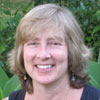 Judy LaKind, PhD, associate professor, Department of Epidemiology & Public Health, has been invited to be the chair and discussion leader for the session on “Swimming Pools: Chemistry and Respiratory Effects” at the Gordon Research Conference on Drinking Water Disinfection By-Products, to be held at Mount Holyoke College in South Hadley, MA, in August 2012.
Judy LaKind, PhD, associate professor, Department of Epidemiology & Public Health, has been invited to be the chair and discussion leader for the session on “Swimming Pools: Chemistry and Respiratory Effects” at the Gordon Research Conference on Drinking Water Disinfection By-Products, to be held at Mount Holyoke College in South Hadley, MA, in August 2012.
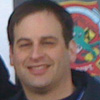 Benjamin Lawner, DO, EMT-P (pictured), assistant professor; Roger Stone, MD, MS, clinical assistant professor; Laura Diegelmann, MD, clinical instructor; Jennifer Guyther, MD, EMT-B, fourth-year emergency medicine/pediatrics resident; and Katherine Baugher, DO, MS, second-year emergency medicine resident, all from the Department of Emergency Medicine, were invited faculty members for the 19th annual conference of the National Collegiate Emergency Medical Services Foundation. The conference was held in Baltimore from February 24-26. Faculty members from the R Adams Cowley Shock Trauma Center also participated, including Deborah Stein, MD, MPH, associate professor, Department of Surgery; Christopher Stephens, MD, MS, assistant professor, Department of Anesthesiology; and Samuel Galvagno, Jr., DO, PhD, assistant professor, Department of Anesthesiology.
Benjamin Lawner, DO, EMT-P (pictured), assistant professor; Roger Stone, MD, MS, clinical assistant professor; Laura Diegelmann, MD, clinical instructor; Jennifer Guyther, MD, EMT-B, fourth-year emergency medicine/pediatrics resident; and Katherine Baugher, DO, MS, second-year emergency medicine resident, all from the Department of Emergency Medicine, were invited faculty members for the 19th annual conference of the National Collegiate Emergency Medical Services Foundation. The conference was held in Baltimore from February 24-26. Faculty members from the R Adams Cowley Shock Trauma Center also participated, including Deborah Stein, MD, MPH, associate professor, Department of Surgery; Christopher Stephens, MD, MS, assistant professor, Department of Anesthesiology; and Samuel Galvagno, Jr., DO, PhD, assistant professor, Department of Anesthesiology.
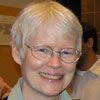 Mary McKenna, PhD, professor, Department of Pediatrics and Program in Neuroscience, presented the opening Plenary Lecture on “Current Understanding of the Metabolic Reactions Essential for Glutamate Neurotransmission in the Tripartite Synapse” at the Glutamatergic Synapse Meeting in Heraklion, Crete, a satellite meeting to the International Society for Neurochemistry Meeting in Athens, Greece, in September 2011. Additionally, Dr. McKenna presented an invited seminar on “Glutamatergic Neurotransmission—Key Roles of Compartmentation and Energy Metabolism” at the Department of Molecular Biology, Universidad Autonoma de Madrid, in Madrid, Spain, on October 19, 2011, and was chair of the Local Host Committee for the 43rd Annual American Society for Neurochemistry Meeting in Baltimore in March 2012. Pragnesh Mistry, graduate student, Department of Microbiology & Immunology, presented “Identification of a Small Molecule TLR2 Antagonist Using Computer-Aided Drug Design (CADD)” at the 2012 Keystone Symposia in Innate Immunity in Keystone, CO.
Mary McKenna, PhD, professor, Department of Pediatrics and Program in Neuroscience, presented the opening Plenary Lecture on “Current Understanding of the Metabolic Reactions Essential for Glutamate Neurotransmission in the Tripartite Synapse” at the Glutamatergic Synapse Meeting in Heraklion, Crete, a satellite meeting to the International Society for Neurochemistry Meeting in Athens, Greece, in September 2011. Additionally, Dr. McKenna presented an invited seminar on “Glutamatergic Neurotransmission—Key Roles of Compartmentation and Energy Metabolism” at the Department of Molecular Biology, Universidad Autonoma de Madrid, in Madrid, Spain, on October 19, 2011, and was chair of the Local Host Committee for the 43rd Annual American Society for Neurochemistry Meeting in Baltimore in March 2012. Pragnesh Mistry, graduate student, Department of Microbiology & Immunology, presented “Identification of a Small Molecule TLR2 Antagonist Using Computer-Aided Drug Design (CADD)” at the 2012 Keystone Symposia in Innate Immunity in Keystone, CO.
 Charlene Quinn, PhD, assistant professor, Department of Epidemiology & Public Health, was an invited speaker at the American Diabetes Association's 59th Annual Advanced Postgraduate Course, held in San Francisco in February. The course presented the latest information in clinical diabetes and provided an educational forum for physicians, nurses and educators interested in diabetes. Dr. Quinn’s topic was “Diabetes Medical Management—Leveraging Commercial Websites, Patient Portals, and Mobile Devices.”
Charlene Quinn, PhD, assistant professor, Department of Epidemiology & Public Health, was an invited speaker at the American Diabetes Association's 59th Annual Advanced Postgraduate Course, held in San Francisco in February. The course presented the latest information in clinical diabetes and provided an educational forum for physicians, nurses and educators interested in diabetes. Dr. Quinn’s topic was “Diabetes Medical Management—Leveraging Commercial Websites, Patient Portals, and Mobile Devices.”
 Kevin Sheth, MD, assistant professor, Department of Neurology, presented “CT Perfusion Increases Time to Reperfusion and May Not Enhance Patient Selection for Endovascular Reperfusion Therapies in Acute Ischemic Stroke” at the International Stroke Conference February 2012. Keli Turner, MD, a third-year general-surgery resident, Department of Surgery, presented a paper entitled “Assessment of Neoadjuvant Chemotherapy on Operative Parameters and Outcome in Patients with Peritoneal Dissemination from High Grade Appendiceal Cancer” at the 65th Annual Meeting of the Society of Surgical Oncology, held in Orlando in March. Co-authors included Nader Hanna, MB, BCh, associate professor; Yue Zhu, MD, research associate; Ajay Jain, MD, assistant professor; Susan Kesmodel, MD, assistant professor; Latoya Taylor, CRNP; and H. Richard Alexander, MD, professor, all from the Department of Surgery, and Rebecca Switzer, BA, a third-year medical student.
Kevin Sheth, MD, assistant professor, Department of Neurology, presented “CT Perfusion Increases Time to Reperfusion and May Not Enhance Patient Selection for Endovascular Reperfusion Therapies in Acute Ischemic Stroke” at the International Stroke Conference February 2012. Keli Turner, MD, a third-year general-surgery resident, Department of Surgery, presented a paper entitled “Assessment of Neoadjuvant Chemotherapy on Operative Parameters and Outcome in Patients with Peritoneal Dissemination from High Grade Appendiceal Cancer” at the 65th Annual Meeting of the Society of Surgical Oncology, held in Orlando in March. Co-authors included Nader Hanna, MB, BCh, associate professor; Yue Zhu, MD, research associate; Ajay Jain, MD, assistant professor; Susan Kesmodel, MD, assistant professor; Latoya Taylor, CRNP; and H. Richard Alexander, MD, professor, all from the Department of Surgery, and Rebecca Switzer, BA, a third-year medical student.
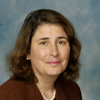 Stefanie Vogel, PhD, presented “Innate and Adaptive Immune Responses to Francisella tularensis” at the National RCE meeting held in Amelia Island, FL, in March. Also in March, Dr. Vogel gave a seminar to T32 students at the Boston University School of Medicine. The title of that talk was “The Role of Alternatively Activated Macrophages in the Resolution of RSV-induced Disease.”
Stefanie Vogel, PhD, presented “Innate and Adaptive Immune Responses to Francisella tularensis” at the National RCE meeting held in Amelia Island, FL, in March. Also in March, Dr. Vogel gave a seminar to T32 students at the Boston University School of Medicine. The title of that talk was “The Role of Alternatively Activated Macrophages in the Resolution of RSV-induced Disease.”
Grants & Contracts
 Alan Faden, MD, the David S. Brown Professor in Trauma; professor, Departments of Anesthesiology, Anatomy & Neurobiology, and Neurology; and director, Center for Shock, Trauma & Anesthesiology Research (STAR ORC), received, along with Susan Dorsey, PhD, RN, FAAN, associate professor, Department of Anesthesiology and Program in Oncology, a five-year, $3,247,093 multi-PI R01 grant from the National Institute of Nursing Research for “Spinal Mechanisms Underlying SCI-Induced Pain: Implications for Targeted Therapy.”
Alan Faden, MD, the David S. Brown Professor in Trauma; professor, Departments of Anesthesiology, Anatomy & Neurobiology, and Neurology; and director, Center for Shock, Trauma & Anesthesiology Research (STAR ORC), received, along with Susan Dorsey, PhD, RN, FAAN, associate professor, Department of Anesthesiology and Program in Oncology, a five-year, $3,247,093 multi-PI R01 grant from the National Institute of Nursing Research for “Spinal Mechanisms Underlying SCI-Induced Pain: Implications for Targeted Therapy.”
 John Hess, MD, MPH, FACP, FAAAS, professor, Departments of Pathology and Medicine, and the late Dr. Tibor Greenwalt of the University of Cincinnati, invented a storage solution that is expected to be approved by the FDA in calendar year 2012. Hemerus Medical, LLC, a Minnesota-based company that develops innovative technologies for the collection of whole blood and the processing and storage of blood components, has completed Phase-3 clinical trials and submitted a New Drug Application to the FDA for its unique, patented SOLX® whole blood collection system. This system’s features include a collection set and a storage solution that is believed to considerably extend the quality and effective life of red blood cells. Hemerus holds the exclusive worldwide license to the intellectual property and furthered this research through the development of a whole blood collection set and clinical trials. The storage solution is the result of research partially funded by the United States Army.
John Hess, MD, MPH, FACP, FAAAS, professor, Departments of Pathology and Medicine, and the late Dr. Tibor Greenwalt of the University of Cincinnati, invented a storage solution that is expected to be approved by the FDA in calendar year 2012. Hemerus Medical, LLC, a Minnesota-based company that develops innovative technologies for the collection of whole blood and the processing and storage of blood components, has completed Phase-3 clinical trials and submitted a New Drug Application to the FDA for its unique, patented SOLX® whole blood collection system. This system’s features include a collection set and a storage solution that is believed to considerably extend the quality and effective life of red blood cells. Hemerus holds the exclusive worldwide license to the intellectual property and furthered this research through the development of a whole blood collection set and clinical trials. The storage solution is the result of research partially funded by the United States Army.
 Wendy Lane, MD, MPH, assistant professor, Department of Epidemiology & Public Health, was awarded a $25,000 grant by the Abell Foundation for her worked entitled “Child Abuse and Maltreatment Program.”
Wendy Lane, MD, MPH, assistant professor, Department of Epidemiology & Public Health, was awarded a $25,000 grant by the Abell Foundation for her worked entitled “Child Abuse and Maltreatment Program.”
 Laurence Magder, PhD, professor, Department of Epidemiology & Public Health, was awarded a $5,000 grant from the American Bar Foundation for his work “Surrogate Decision-Making.”
Laurence Magder, PhD, professor, Department of Epidemiology & Public Health, was awarded a $5,000 grant from the American Bar Foundation for his work “Surrogate Decision-Making.”
 James Waltz, PhD, assistant professor, Department of Psychiatry, received a five-year $1,300,000 R01 grant from the National Institute of Mental Health to conduct “Neurocomputational and fMRI Studies of Motivational Deficits in Schizophrenia.” Heather Wied, a student in the Medical Scientist Training Program, a dual-degree MD/PhD program, received a prestigious F30 National Research Service Award in the amount of $195,422 from the National Institute on Drug Abuse for her project “The Role of Dopaminergic Error Signaling in Outcome-Specific Learning.” Heather is a second-year graduate student in the Program in Neuroscience. F30 grants are awarded only to MD/PhD students, to provide support in the form of tuition, training-related fees, partial stipend support, and other institutional allowances during graduate school and the final two years of medical school.
James Waltz, PhD, assistant professor, Department of Psychiatry, received a five-year $1,300,000 R01 grant from the National Institute of Mental Health to conduct “Neurocomputational and fMRI Studies of Motivational Deficits in Schizophrenia.” Heather Wied, a student in the Medical Scientist Training Program, a dual-degree MD/PhD program, received a prestigious F30 National Research Service Award in the amount of $195,422 from the National Institute on Drug Abuse for her project “The Role of Dopaminergic Error Signaling in Outcome-Specific Learning.” Heather is a second-year graduate student in the Program in Neuroscience. F30 grants are awarded only to MD/PhD students, to provide support in the form of tuition, training-related fees, partial stipend support, and other institutional allowances during graduate school and the final two years of medical school.
Honors & Awards
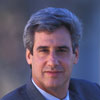 Brian Berman, MD, professor, Department of Family & Community Medicine, and founder and director of the University of Maryland Center for Integrative Medicine, received the Sir Alister McIntyre Distinguished Lecture Award from the University of the West Indies and University of Technology, Jamaica. The annual award is given to a distinguished physician and researcher. Dr. Berman received the award at the 18th Annual International Diabetes Conference, held in Ocho Rios, Jamaica, in March. At the conference, he presented the Sir Alister McIntyre Distinguished Lecture on “Integrative Practices for Diabetes Management.” Dean E. Albert Reece, MD, PhD, MBA, presented the award to Dr. Berman. “Professor Berman has dedicated his career to evaluating the efficacy, safety and cost effectiveness of integrative medicine and is considered one of the pioneers in the field," said Dean Reece. "He founded the Center for Integrative Medicine at the University of Maryland School of Medicine, the first program of its kind based at an academic medical center. Like other Sir Alister McIntyre Distinguished Lecture Award recipients, he is recognized nationally and internationally for his pioneering research and medical scholarship."
Brian Berman, MD, professor, Department of Family & Community Medicine, and founder and director of the University of Maryland Center for Integrative Medicine, received the Sir Alister McIntyre Distinguished Lecture Award from the University of the West Indies and University of Technology, Jamaica. The annual award is given to a distinguished physician and researcher. Dr. Berman received the award at the 18th Annual International Diabetes Conference, held in Ocho Rios, Jamaica, in March. At the conference, he presented the Sir Alister McIntyre Distinguished Lecture on “Integrative Practices for Diabetes Management.” Dean E. Albert Reece, MD, PhD, MBA, presented the award to Dr. Berman. “Professor Berman has dedicated his career to evaluating the efficacy, safety and cost effectiveness of integrative medicine and is considered one of the pioneers in the field," said Dean Reece. "He founded the Center for Integrative Medicine at the University of Maryland School of Medicine, the first program of its kind based at an academic medical center. Like other Sir Alister McIntyre Distinguished Lecture Award recipients, he is recognized nationally and internationally for his pioneering research and medical scholarship."
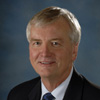 William Blattner, MD, associate director, Institute of Human Virology (IHV), and professor, Department of Medicine, received the Distinguish Alumnus Award from The Kinkaid School, a Pre-K to 12th grade independent school in Houston, TX. Dr. Blattner, a 1962 graduate of the school, joins past honorees who include President & Mrs. George H. W. Bush. Dr. Blattner was honored for his notable and lengthy career in research at the National Cancer Institute and for his work at IHV, including his leadership on the President’s Emergency Plan for AIDS Relief (PEPFAR) implementation.
William Blattner, MD, associate director, Institute of Human Virology (IHV), and professor, Department of Medicine, received the Distinguish Alumnus Award from The Kinkaid School, a Pre-K to 12th grade independent school in Houston, TX. Dr. Blattner, a 1962 graduate of the school, joins past honorees who include President & Mrs. George H. W. Bush. Dr. Blattner was honored for his notable and lengthy career in research at the National Cancer Institute and for his work at IHV, including his leadership on the President’s Emergency Plan for AIDS Relief (PEPFAR) implementation.
 Robert Gallo, MD, director, Institute of Human Virology, and professor, Departments of Medicine and Microbiology & Immunology, received the 2012 Mino Damato Award at a ceremony held in Rome, Italy, in December 2011. Mr. Damato, known as the “Italian Walter Cronkite,” passed away in 2010, and had interviewed Dr. Gallo on Italian National TV during the early days of the AIDS epidemic. Mr. Damato was so deeply touched by the devastating effects of AIDS on orphaned children in Romania that over the following 25 years he dedicated his life to helping them. He saved the lives of thousands and established an infrastructure that continues to support the plight of disadvantaged children in the darkest and poorest corners of Europe through his charitable foundation, Bambini in Emergenza. Not only was Dr. Gallo honored for his “extraordinary role in unraveling the mysteries of AIDS and the development of therapeutic modalities for it,” but also for his personal acquaintance with Mr. Damato, whose “life was truly dedicated to the cause of the littlest sufferers of AIDS.” In addition, Dr. Gallo returned to his home state of Connecticut to receive his 30th honorary doctorate degree and to deliver the keynote address for the University of Connecticut’s Graduate School commencement ceremony on May 5. Dr. Gallo was awarded the Doctor of Science, honoris causa, for his work in “advancing science and public health so profoundly that, in a very meaningful way, he belongs to the entire world. Nonetheless, the people of Connecticut are proud to claim him as a native son.” P. Rick Grimm, PhD, postdoctoral fellow, Department of Physiology, won the Amgen Postdoctoral Excellence in Renal Research Award from the American Physiological Society at the Experimental Biology Meeting in San Diego in April. His award-winning work was entitled “SPAK, OSR1 and MO25a Form an Apical Signaling System in the DCT which Regulates NCC-salt Transport, DCT Mass and Blood Pressure.” Sarah Pick, MS, director of Marketing and Public Relations, Institute for Genome Sciences, has been named as one of Maryland’s Top 100 Women by The Daily Record. The winners are selected based on their professional accomplishment, community involvement and commitment to mentoring. The award ceremony was held at the Meyerhoff Symphony Hall on May 7.
Robert Gallo, MD, director, Institute of Human Virology, and professor, Departments of Medicine and Microbiology & Immunology, received the 2012 Mino Damato Award at a ceremony held in Rome, Italy, in December 2011. Mr. Damato, known as the “Italian Walter Cronkite,” passed away in 2010, and had interviewed Dr. Gallo on Italian National TV during the early days of the AIDS epidemic. Mr. Damato was so deeply touched by the devastating effects of AIDS on orphaned children in Romania that over the following 25 years he dedicated his life to helping them. He saved the lives of thousands and established an infrastructure that continues to support the plight of disadvantaged children in the darkest and poorest corners of Europe through his charitable foundation, Bambini in Emergenza. Not only was Dr. Gallo honored for his “extraordinary role in unraveling the mysteries of AIDS and the development of therapeutic modalities for it,” but also for his personal acquaintance with Mr. Damato, whose “life was truly dedicated to the cause of the littlest sufferers of AIDS.” In addition, Dr. Gallo returned to his home state of Connecticut to receive his 30th honorary doctorate degree and to deliver the keynote address for the University of Connecticut’s Graduate School commencement ceremony on May 5. Dr. Gallo was awarded the Doctor of Science, honoris causa, for his work in “advancing science and public health so profoundly that, in a very meaningful way, he belongs to the entire world. Nonetheless, the people of Connecticut are proud to claim him as a native son.” P. Rick Grimm, PhD, postdoctoral fellow, Department of Physiology, won the Amgen Postdoctoral Excellence in Renal Research Award from the American Physiological Society at the Experimental Biology Meeting in San Diego in April. His award-winning work was entitled “SPAK, OSR1 and MO25a Form an Apical Signaling System in the DCT which Regulates NCC-salt Transport, DCT Mass and Blood Pressure.” Sarah Pick, MS, director of Marketing and Public Relations, Institute for Genome Sciences, has been named as one of Maryland’s Top 100 Women by The Daily Record. The winners are selected based on their professional accomplishment, community involvement and commitment to mentoring. The award ceremony was held at the Meyerhoff Symphony Hall on May 7.
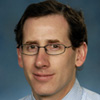 Stephen Schenkel, MD, MPP, associate professor, Department of Emergency Medicine, has been elected to the Alpha Omega Alpha Honor Medical Society by its Beta Chapter at the University of Maryland School of Medicine. This honor is awarded to faculty members who exemplify the leadership qualities, academic excellence and professionalism that are the standards for membership in this prestigious organization.
Stephen Schenkel, MD, MPP, associate professor, Department of Emergency Medicine, has been elected to the Alpha Omega Alpha Honor Medical Society by its Beta Chapter at the University of Maryland School of Medicine. This honor is awarded to faculty members who exemplify the leadership qualities, academic excellence and professionalism that are the standards for membership in this prestigious organization.
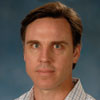 Eric Sundberg, PhD, head of the Laboratory of Structural Immunology & Oncology at the Institute of Human Virology, and associate professor, Department of Medicine, was awarded an Alexander von Humboldt Fellowship for Experienced Researchers. The fellowship will fund travel, living and research costs for Dr. Sundberg to conduct research in the laboratory of his German host, Dr. Wolfgang Fischer of the Max von Pettenkofer Institute for Hygiene and Medical Microbiology at the University of Munich in Germany. Dr. Sundberg will spend approximately three months per year in Dr. Fischer’s lab for the next three years (2012-2015), collaborating on a project which will focus on elucidating key steps in the process by which Helicobacter pylori causes gastric cancer. Dr. Fischer is an internationally-recognized expert in Helibacter pylori pathogenesis.
Eric Sundberg, PhD, head of the Laboratory of Structural Immunology & Oncology at the Institute of Human Virology, and associate professor, Department of Medicine, was awarded an Alexander von Humboldt Fellowship for Experienced Researchers. The fellowship will fund travel, living and research costs for Dr. Sundberg to conduct research in the laboratory of his German host, Dr. Wolfgang Fischer of the Max von Pettenkofer Institute for Hygiene and Medical Microbiology at the University of Munich in Germany. Dr. Sundberg will spend approximately three months per year in Dr. Fischer’s lab for the next three years (2012-2015), collaborating on a project which will focus on elucidating key steps in the process by which Helicobacter pylori causes gastric cancer. Dr. Fischer is an internationally-recognized expert in Helibacter pylori pathogenesis.
In the News
 Brian Berman, MD, professor, Department of Family & Community Medicine, and director, Center for Integrative Medicine, was interviewed by WBAL-TV 11 News at the center’s Health and Wellness Conference on April 28, 2012. Previously, on April 8, he had discussed the Health and Wellness Conference on The Jim Novick Show on WCBM-AM radio. For an article about home remedies on the February 16 edition of the prevention.com website, he offered tips for combating the cold and flu.
Brian Berman, MD, professor, Department of Family & Community Medicine, and director, Center for Integrative Medicine, was interviewed by WBAL-TV 11 News at the center’s Health and Wellness Conference on April 28, 2012. Previously, on April 8, he had discussed the Health and Wellness Conference on The Jim Novick Show on WCBM-AM radio. For an article about home remedies on the February 16 edition of the prevention.com website, he offered tips for combating the cold and flu.
 James Borin, MD, assistant professor, Department of Surgery, was interviewed on April 11, 2012, on Sirius XM’s nationally-syndicated radio program Doctor Radio. The topic was robotic surgery for prostate cancer.
James Borin, MD, assistant professor, Department of Surgery, was interviewed on April 11, 2012, on Sirius XM’s nationally-syndicated radio program Doctor Radio. The topic was robotic surgery for prostate cancer.
 Delia Chiaramonte, MD, assistant professor, Department of Family & Community Medicine and director of education, Center for Integrative Medicine, commented on local holistic physician Gina Sager and the significance of a Bravewell Collaborative Study documenting the increased use of complementary medicine for an article in the Baltimore Sun on March 1.
Delia Chiaramonte, MD, assistant professor, Department of Family & Community Medicine and director of education, Center for Integrative Medicine, commented on local holistic physician Gina Sager and the significance of a Bravewell Collaborative Study documenting the increased use of complementary medicine for an article in the Baltimore Sun on March 1.
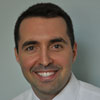 Christopher D’Adamo, PhD, assistant professor, Departments of Family & Community Medicine and Epidemiology & Public Health and the Center for Integrative Medicine, explained how to interpret food labels for an article in the February 19 issue of Men’s Health. The article was also posted on ABC news.com. Additionally, Dr. D’Adamo appeared on Maryland Public Television’s Direct Connection on March 19 to discuss the growth of integrative medicine and in the May 14 issue of the Globe he stressed the importance of reading labels on over-the-counter medications and supplements.
Christopher D’Adamo, PhD, assistant professor, Departments of Family & Community Medicine and Epidemiology & Public Health and the Center for Integrative Medicine, explained how to interpret food labels for an article in the February 19 issue of Men’s Health. The article was also posted on ABC news.com. Additionally, Dr. D’Adamo appeared on Maryland Public Television’s Direct Connection on March 19 to discuss the growth of integrative medicine and in the May 14 issue of the Globe he stressed the importance of reading labels on over-the-counter medications and supplements.
 Joyce Frye, DO, MBA, MSCE, FACOG, ABHM, clinical assistant professor, Departments of Family & Community Medicine and Obstetrics, Gynecology & Reproductive Sciences, offered advice for alleviating the pain and discomfort of menstrual cramps in the May 2012 issue of Shape magazine.
Joyce Frye, DO, MBA, MSCE, FACOG, ABHM, clinical assistant professor, Departments of Family & Community Medicine and Obstetrics, Gynecology & Reproductive Sciences, offered advice for alleviating the pain and discomfort of menstrual cramps in the May 2012 issue of Shape magazine.
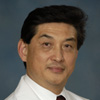 Lixing Lao, PhD, professor, Department of Family & Community Medicine, demonstrated cupping and explained why some patients prefer it to acupuncture for a story broadcast by ABC 7 News, WJLA-TV, on May 4.
Lixing Lao, PhD, professor, Department of Family & Community Medicine, demonstrated cupping and explained why some patients prefer it to acupuncture for a story broadcast by ABC 7 News, WJLA-TV, on May 4.
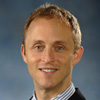 Eric Manheimer, MS, research associate, Department of Family & Community Medicine, discussed in an April 30 interview on the Sirius XM Radio Network the results of a meta-analysis research study he conducted that compared the efficacy of acupuncture and medications to treat Irritable Bowel Syndrome. Reuters news service also published a story about the research.
Eric Manheimer, MS, research associate, Department of Family & Community Medicine, discussed in an April 30 interview on the Sirius XM Radio Network the results of a meta-analysis research study he conducted that compared the efficacy of acupuncture and medications to treat Irritable Bowel Syndrome. Reuters news service also published a story about the research.
 Tricia Ting, MD, assistant professor, Department of Neurology, was featured in the Baltimore Sun on March 6 in an article on seizure therapy, which was also picked up by Taiwan News and the Sacramento Bee.
Tricia Ting, MD, assistant professor, Department of Neurology, was featured in the Baltimore Sun on March 6 in an article on seizure therapy, which was also picked up by Taiwan News and the Sacramento Bee.
New Faculty
Devi Chakravorty, MD, joined the Department of Obstetrics, Gynecology & Reproductive Sciences as an assistant professor in April. Specifically, Dr. Chakravorty will work in the department’s Division of General OB/GYN. Dr. Chakravorty received her medical doctor degree in 2003 from the Virginia Commonwealth University, Medical College of Virginia. In 2007, she completed both her internship and residency in obstetrics and gynecology at the Virginia Commonwealth University Medical Center. Following residency, Dr. Chakravorty joined the Richmond OB/GYN Associates in Midlothian, VA, as an associate physician. She will provide gynecological and obstetrical care to women of all ages at the Baltimore Washington Medical Center, which is an affiliate hospital of the University of Maryland Medical System. She is a diplomate of the American Board of Obstetrics and Gynecology.
Publications
 Lindsay Black, PhD, professor, Department of Biochemistry & Molecular Biology, published an article entitled “Extensive Proteolysis of Head and Inner Body Proteins by a Morphogenetic Protease in the Giant Pseudomonas aeruginosa Phage fKZ” in Molecular Microbiology, 2012 March 20. In addition, Dr. Black published “Bubblegrams Reveal the Inner Body of Bacteriophage fKZ” in Science, 2012 January 13;335(6065):182.
Lindsay Black, PhD, professor, Department of Biochemistry & Molecular Biology, published an article entitled “Extensive Proteolysis of Head and Inner Body Proteins by a Morphogenetic Protease in the Giant Pseudomonas aeruginosa Phage fKZ” in Molecular Microbiology, 2012 March 20. In addition, Dr. Black published “Bubblegrams Reveal the Inner Body of Bacteriophage fKZ” in Science, 2012 January 13;335(6065):182.
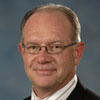 Gary Fiskum, PhD, the M. Jane Matjasko Professor for Research and vice chair for Research, Department of Anesthesiology, authored “Novel Mitochondrial Targets for Neuroprotection” in the Journal of Cerebral Blood Flow and Metabolism, epub March 28.
Gary Fiskum, PhD, the M. Jane Matjasko Professor for Research and vice chair for Research, Department of Anesthesiology, authored “Novel Mitochondrial Targets for Neuroprotection” in the Journal of Cerebral Blood Flow and Metabolism, epub March 28.
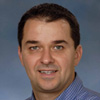 Pawel Gajer, PhD, research associate, Institute for Genome Sciences, and Jacques Ravel, PhD (pictured), associate professor, Department of Microbiology & Immunology, and associate director of Genomics, Institute for Genome Sciences, co-authored “Assessment of the Human Faecal Microbiota: II. Reproducibility and Associations of 16S rRNA Pyrosequences” in the February 9, 2012 edition of the European Journal of Clinical Investigation. In addition, Drs. Gajer and Ravel, along with W. Florian Fricke, PhD, assistant professor, Department of Microbiology & Immunology and Institute for Genome Sciences, and James R. White, PhD, bioinformatics software engineer, Institute for Genome Sciences, co-authored “Proof of Concept of Microbiome-Metabolome Analysis and Delayed Gluten Exposure on Celiac Disease Autoimmunity in Genetically At-Risk Infants,” in PLoS, March 2012; Volume: 7(3): e33387. Dr. Ravel also co-authored “Evaluation of Methods for the Extraction and Purification of DNA from the Human Microbiome” in PLoS, March 2012; Volume 7(3): e33865.
Pawel Gajer, PhD, research associate, Institute for Genome Sciences, and Jacques Ravel, PhD (pictured), associate professor, Department of Microbiology & Immunology, and associate director of Genomics, Institute for Genome Sciences, co-authored “Assessment of the Human Faecal Microbiota: II. Reproducibility and Associations of 16S rRNA Pyrosequences” in the February 9, 2012 edition of the European Journal of Clinical Investigation. In addition, Drs. Gajer and Ravel, along with W. Florian Fricke, PhD, assistant professor, Department of Microbiology & Immunology and Institute for Genome Sciences, and James R. White, PhD, bioinformatics software engineer, Institute for Genome Sciences, co-authored “Proof of Concept of Microbiome-Metabolome Analysis and Delayed Gluten Exposure on Celiac Disease Autoimmunity in Genetically At-Risk Infants,” in PLoS, March 2012; Volume: 7(3): e33387. Dr. Ravel also co-authored “Evaluation of Methods for the Extraction and Purification of DNA from the Human Microbiome” in PLoS, March 2012; Volume 7(3): e33865.
 Peter Gorman, MD, associate professor, Department of Neurology, was a section editor for the 2nd edition of the text book Spinal Cord Medicine, published by Lippencort, Williams & Wilkins on December 16, 2011.
Peter Gorman, MD, associate professor, Department of Neurology, was a section editor for the 2nd edition of the text book Spinal Cord Medicine, published by Lippencort, Williams & Wilkins on December 16, 2011.
 D. Kojo Hamilton, MD, assistant professor, Department of Neurosurgery, authored a chapter in The Textbook of Spinal Surgery, third edition, editors: K.H. Bridwell and R.L. Dewald, published by Lippincott, Williams and Wilkins, Philadelphia, in December 2011. The title of his chapter is “Anterior Decompression Techniques for Thoracic and Lumbar Fractures.” Zuzana Justinova, MD, PhD, assistant professor, Department of Psychiatry, published an article entitled “The Endogenous Cannabinoid 2-arachidonoylglycerol is Intravenously Self-Administered by Squirrel Monkeys” in the Journal of Neuroscience, 2011,31(19):7043-8. In addition, Dr. Justinova co-authored an article entitled “Novel Use of a Lipid-Lowering Fibrate Medication to Prevent Nicotine Reward and Relapse: Preclinical Findings” in Neuropsychopharmacology on March 28, 2012 (epub ahead of print). The journal ran a press release entitled “Cholesterol Meds to Help Smokers Kick the Habit” about the article.
D. Kojo Hamilton, MD, assistant professor, Department of Neurosurgery, authored a chapter in The Textbook of Spinal Surgery, third edition, editors: K.H. Bridwell and R.L. Dewald, published by Lippincott, Williams and Wilkins, Philadelphia, in December 2011. The title of his chapter is “Anterior Decompression Techniques for Thoracic and Lumbar Fractures.” Zuzana Justinova, MD, PhD, assistant professor, Department of Psychiatry, published an article entitled “The Endogenous Cannabinoid 2-arachidonoylglycerol is Intravenously Self-Administered by Squirrel Monkeys” in the Journal of Neuroscience, 2011,31(19):7043-8. In addition, Dr. Justinova co-authored an article entitled “Novel Use of a Lipid-Lowering Fibrate Medication to Prevent Nicotine Reward and Relapse: Preclinical Findings” in Neuropsychopharmacology on March 28, 2012 (epub ahead of print). The journal ran a press release entitled “Cholesterol Meds to Help Smokers Kick the Habit” about the article.
 Benjamin Lawner, DO, EMT-P, assistant professor, Department of Emergency Medicine, co-authored “Management of the Post-Cardiac Arrest Syndrome, which was published in The Journal of Emergency Medicine in January 2012. In addition, Dr. Lawner was one of four guest editors for the February issue of Emergency Medicine Clinics of North America, on the topic of cardiac arrest. Amal Mattu, MD, professor, Department of Emergency Medicine, and consulting editor for the journal, wrote the foreword for the issue. Contributing authors from the Department of Emergency Medicine included Joseph Martinez, MD, assistant professor and assistant dean for Student Affairs (author of “Prognosis in Cardiac Arrest”); Michael Bond, MD, assistant professor (co-author of “Cardiopulmonary Arrest Update”); J.V. Nable, MD, EMT-P, third-year emergency medicine resident, Dr. Lawner, and Christopher Stephens, MD, assistant professor (authors of “Airway Management in Cardiac Arrest”); Daniel Boutsikaris, MD, fourth-year resident, and Michael Winters, MD, associate professor (authors of “Postresuscitation Care”); and Michael McCurdy, MD, assistant professor, and Samantha Wood, MD, sixth-year resident (authors of “Rapid Response Systems: Identification and Management of the Prearrest State”). Erik Lillehoj, PhD, assistant professor, Department of Pediatrics, co-authored “Anti-Inflammatory Role of MUC1 Mucin during Infection with Nontypeable Haemophilus influenzae” in the American Journal of Respiratory Cell and Molecular Biology, Vol. 46, pages 149-156, 2012. Michael Makley, MD, assistant professor, Department of Neurology, co-published “A Hidden Reservoir of Methicillin-resistant Staphylococcus aureus and Vancomycin-resistant Enterococcus in Patients Newly Admitted to an Acute Rehabilitation Hospital” in PM & R, 2012;4:18-22.
Benjamin Lawner, DO, EMT-P, assistant professor, Department of Emergency Medicine, co-authored “Management of the Post-Cardiac Arrest Syndrome, which was published in The Journal of Emergency Medicine in January 2012. In addition, Dr. Lawner was one of four guest editors for the February issue of Emergency Medicine Clinics of North America, on the topic of cardiac arrest. Amal Mattu, MD, professor, Department of Emergency Medicine, and consulting editor for the journal, wrote the foreword for the issue. Contributing authors from the Department of Emergency Medicine included Joseph Martinez, MD, assistant professor and assistant dean for Student Affairs (author of “Prognosis in Cardiac Arrest”); Michael Bond, MD, assistant professor (co-author of “Cardiopulmonary Arrest Update”); J.V. Nable, MD, EMT-P, third-year emergency medicine resident, Dr. Lawner, and Christopher Stephens, MD, assistant professor (authors of “Airway Management in Cardiac Arrest”); Daniel Boutsikaris, MD, fourth-year resident, and Michael Winters, MD, associate professor (authors of “Postresuscitation Care”); and Michael McCurdy, MD, assistant professor, and Samantha Wood, MD, sixth-year resident (authors of “Rapid Response Systems: Identification and Management of the Prearrest State”). Erik Lillehoj, PhD, assistant professor, Department of Pediatrics, co-authored “Anti-Inflammatory Role of MUC1 Mucin during Infection with Nontypeable Haemophilus influenzae” in the American Journal of Respiratory Cell and Molecular Biology, Vol. 46, pages 149-156, 2012. Michael Makley, MD, assistant professor, Department of Neurology, co-published “A Hidden Reservoir of Methicillin-resistant Staphylococcus aureus and Vancomycin-resistant Enterococcus in Patients Newly Admitted to an Acute Rehabilitation Hospital” in PM & R, 2012;4:18-22.
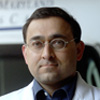 Amal Mattu, MD, professor, Department of Emergency Medicine, served as an editor of Cardiovascular Problems in Emergency Medicine: A Discussion-Based Review, published by Wiley-Blackwell in December 2011. Dr. Mattu co-authored four chapters in the book, including two with colleagues from the Department of Emergency Medicine - a chapter on chest pain with Brian Browne, MD, professor and chair, and a chapter on cardiac arrest with Benjamin Lawner, DO, EMT-P, assistant professor. In addition, Dr. Mattu, along with Michael Bond, MD, assistant professor, and Semhar Tewelde, MD, third-year resident, both from the Department of Emergency Medicine, co-authored “The Cardiac Literature 2010,” which was published in the May 2012 issue of The American Journal of Emergency Medicine.
Amal Mattu, MD, professor, Department of Emergency Medicine, served as an editor of Cardiovascular Problems in Emergency Medicine: A Discussion-Based Review, published by Wiley-Blackwell in December 2011. Dr. Mattu co-authored four chapters in the book, including two with colleagues from the Department of Emergency Medicine - a chapter on chest pain with Brian Browne, MD, professor and chair, and a chapter on cardiac arrest with Benjamin Lawner, DO, EMT-P, assistant professor. In addition, Dr. Mattu, along with Michael Bond, MD, assistant professor, and Semhar Tewelde, MD, third-year resident, both from the Department of Emergency Medicine, co-authored “The Cardiac Literature 2010,” which was published in the May 2012 issue of The American Journal of Emergency Medicine.
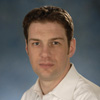 Emmanuel Mongodin, PhD, assistant professor, Department of Microbiology & Immunology and Institute for Genome Sciences, and Claire Fraser, PhD, professor, Departments of Medicine and Microbiology & Immunology, and director, Institute for Genome Sciences, co-authored “Genome Stability of Lyme Disease Spirochetes: Comparative Genomics of Borrelia burgdorferi Plasmids” in PLoS, March 2012; Volume 7(3): e33280.
Emmanuel Mongodin, PhD, assistant professor, Department of Microbiology & Immunology and Institute for Genome Sciences, and Claire Fraser, PhD, professor, Departments of Medicine and Microbiology & Immunology, and director, Institute for Genome Sciences, co-authored “Genome Stability of Lyme Disease Spirochetes: Comparative Genomics of Borrelia burgdorferi Plasmids” in PLoS, March 2012; Volume 7(3): e33280.
 Brian Polster, PhD, assistant professor, Department of Anesthesiology, was senior author of “Investigation of Mitochondrial Dysfunction by Sequential Microplate-Based Respiration Measurements from Intact and Permeabilized Neurons” in PLoS ONE, April 2012, 7(4): e34465.
Brian Polster, PhD, assistant professor, Department of Anesthesiology, was senior author of “Investigation of Mitochondrial Dysfunction by Sequential Microplate-Based Respiration Measurements from Intact and Permeabilized Neurons” in PLoS ONE, April 2012, 7(4): e34465.
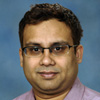 Anindo Roy, PhD, assistant professor, Department of Neurology, published a chapter entitled “Beyond Human or Robot Administered Treadmill Training” in Neurorehabilitation Technology, Chapter 14, pp. 233-252, Springer-Verlag, New York, 2012.
Anindo Roy, PhD, assistant professor, Department of Neurology, published a chapter entitled “Beyond Human or Robot Administered Treadmill Training” in Neurorehabilitation Technology, Chapter 14, pp. 233-252, Springer-Verlag, New York, 2012.
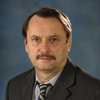 Horea Rus, MD, assistant professor, Department of Neurology, co-published an article entitled “Membrane Attack by Complement: The Assembly and Biology of Terminal Complement Complexes” in Immunologic Research, 2011, 51:45-60.
Horea Rus, MD, assistant professor, Department of Neurology, co-published an article entitled “Membrane Attack by Complement: The Assembly and Biology of Terminal Complement Complexes” in Immunologic Research, 2011, 51:45-60.
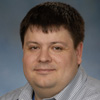 David Rasko, PhD (pictured), assistant professor, Department of Microbiology & Immunology and Institute for Genome Sciences, and Jason Sahl, PhD, postdoctoral fellow, Institute for Genome Sciences, co-authored “Draft Genome Sequence of Vibrio fischeri SR5, A Strain Isolated from the Light Organ of the Mediterranean Squid Sepiola robusta” in the Journal of Bacteriology, March 2012; Volume: 194(6): 1639. Additionally, Drs. Sahl and Rasko, along with Malcolm Matalka, bioinformatics software engineer, Institute for Genome Sciences, co-authored “Genome Sequences of Four Divergent Multidrug-Resistant Acinetobacter baumannii Strains Isolated from Patients with Sepsis or Osteomyelitis,” in Journal of Bacteriology, March 2012; Volume: 194(6): 1619-20.
David Rasko, PhD (pictured), assistant professor, Department of Microbiology & Immunology and Institute for Genome Sciences, and Jason Sahl, PhD, postdoctoral fellow, Institute for Genome Sciences, co-authored “Draft Genome Sequence of Vibrio fischeri SR5, A Strain Isolated from the Light Organ of the Mediterranean Squid Sepiola robusta” in the Journal of Bacteriology, March 2012; Volume: 194(6): 1639. Additionally, Drs. Sahl and Rasko, along with Malcolm Matalka, bioinformatics software engineer, Institute for Genome Sciences, co-authored “Genome Sequences of Four Divergent Multidrug-Resistant Acinetobacter baumannii Strains Isolated from Patients with Sepsis or Osteomyelitis,” in Journal of Bacteriology, March 2012; Volume: 194(6): 1619-20.
 Stephen Schenkel, MD, MPP, associate professor, Department of Emergency Medicine, was a co-author on “Ill, Itinerant, and Insured: The Top 20 Users of Emergency Departments in Baltimore City,” which was published by The Scientific World Journal in April 2012. Rosemary Schuh, PhD, assistant professor, Department of Neurology, co-published a manuscript entitled “Measuring Mitochondrial Respiration in Intact Single Muscle Fibers” in the American Journal of Physiology—Regulatory, Integrative and Comparative Physiology, 2011, Dec 7.
Stephen Schenkel, MD, MPP, associate professor, Department of Emergency Medicine, was a co-author on “Ill, Itinerant, and Insured: The Top 20 Users of Emergency Departments in Baltimore City,” which was published by The Scientific World Journal in April 2012. Rosemary Schuh, PhD, assistant professor, Department of Neurology, co-published a manuscript entitled “Measuring Mitochondrial Respiration in Intact Single Muscle Fibers” in the American Journal of Physiology—Regulatory, Integrative and Comparative Physiology, 2011, Dec 7.
 Kevin Sheth, MD, assistant professor, Department of Neurology, co-published an article entitled “Treatment of Neurocritical Care Emergencies in Pregnancy” in Current Treatment Options in Neurology, 2012, Epub ahead of print.
Kevin Sheth, MD, assistant professor, Department of Neurology, co-published an article entitled “Treatment of Neurocritical Care Emergencies in Pregnancy” in Current Treatment Options in Neurology, 2012, Epub ahead of print.
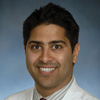 Devinder Singh, MD (pictured), assistant professor, Department of Surgery, and Karan Chopra, MD, newly graduated medical student from the Class of 2012, co-authored “Bioterrorism: Preparing the Plastic Surgeon” in ePlasty. To view their article, visit www.ncbi.nlm.nih.gov/pubmed/22132252.
Devinder Singh, MD (pictured), assistant professor, Department of Surgery, and Karan Chopra, MD, newly graduated medical student from the Class of 2012, co-authored “Bioterrorism: Preparing the Plastic Surgeon” in ePlasty. To view their article, visit www.ncbi.nlm.nih.gov/pubmed/22132252.
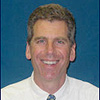 Michael Witting, MD, MS, associate professor, Department of Emergency Medicine, authored “IV Access Difficulty: Incidence and Delays in an Urban Emergency Department,” which was published by The Journal of Emergency Medicine in January 2012.
Michael Witting, MD, MS, associate professor, Department of Emergency Medicine, authored “IV Access Difficulty: Incidence and Delays in an Urban Emergency Department,” which was published by The Journal of Emergency Medicine in January 2012.

